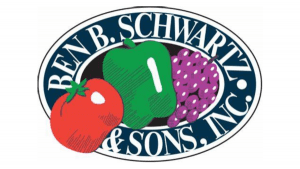Welcome to Blue Book!
Are you ready to join the thousands of companies who rely on Blue Book to drive smarter decisions? View our plans and get started today!
Still have questions? We’d love to show you what Blue Book can do for you. Drop us a line– we’ve been waiting for you.

While the produce industry has been awash in discussion about how to market fresh fruit and vegetables to multiple generations—what about working together for optimal productivity? From twenty-somethings to senior citizens, for the first time in modern history, four different generations are working side by side—and the collaboration isn’t always harmonious.
According to a survey by Philadelphia talent solutions firm Lee Hecht Harrison, 60 percent of U.S. employers experience some type of generational conflict at their company or organization. This can be a direct result of professionals in their sixties and seventies choosing—many out of necessity—to remain in or reenter the workforce after watching nest eggs shrink along with the economy.
Whatever the reason, the battle for jobs can be fierce. According to the U.S. Bureau of Labor Statistics, 32 percent of the American workforce will be 50 years old or older in 2014, up from 27 percent in 2005. By 2016, nearly 25 percent of U.S. employees will be senior citizens and this is not good news for twenty-somethings trying to enter the job market (most of whom end up vastly underemployed) or for thirty- and forty-year-olds angling for a promotion.
For employers, it means trying to keep workers happy while navigating an environment fraught with potential misunderstandings, varying styles, and different ideas of what it means to be successful. A day at the office can sometimes feel more like a stressful family reunion, where the 64-year-old Baby Boomer can’t understand why the 42-year-old Gen Xer doesn’t work until nine o’clock in the evening, the Gen Xer frowns at the 26-year-old Millennial’s proclivity for constant texting, and the 75-year-old Traditionalist just shakes his head and wonders what ever happened to the dependable 30-year career capped by a retirement party and a gold watch.
But it’s an issue that must be addressed for businesses to compete effectively, says Shannon Burns, an ethics consultant who works with people reentering the job market. “Friction,” she declares, “is a distraction.” And how can employers avoid friction? One way is by following the sage advice of longtime New York radio personality Bernard Meltzer (1918-1998), who preached the importance of learning how “to disagree without being disagreeable.”
From Cradle To Grave And In Between
Though the age ranges can differ slightly from one source to another, most agree on the descriptive names for each generation—Traditionalists, Baby Boomers, Generation X, and Millennials (or Generation Y).
The Silent Generation
With the U.S. civilian labor force comprised of nearly 155 million people, about 7.5 million are from the Silent Generation. Also known as Traditionalists, they range in age from 67 to 87 years, and their lives were molded by events such as the Great Depression, World War II, and the assassination of President John F. Kennedy. Traditionalists went to work to build a legacy and leave something behind for the next generation; they were loyal to their employers, often sticking with the same company for decades. They knew how bad things could get, and felt fortunate to have a good job and a family, house, or car.
“For this generation, when it came time to retire they negotiated the process,” says Dr. Gustavo Grodnitzky, a psychologist and work environment consultant. Most Traditionalists had a ‘magic number’ for when retiring, and “if their boss agreed, they would retire. They didn’t typically challenge authority.”








